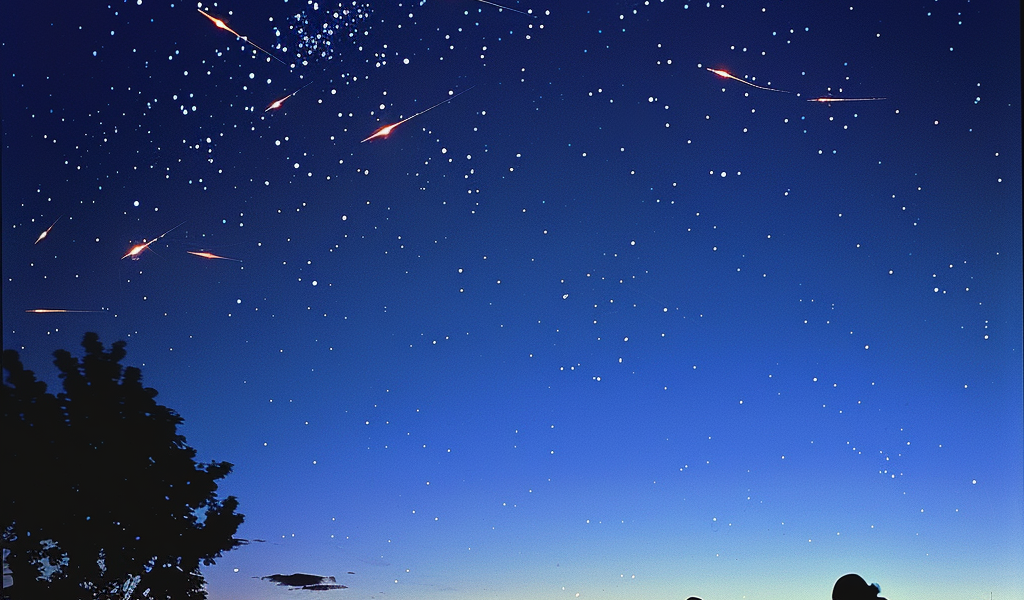As the summer sky unfolds, stargazers are in for a spectacular treat with the convergence of three meteor showers, offering a dazzling display of shooting stars. This cosmic event is set to take place as the full “Buck Moon” begins to wane, making way for an enchanting week of celestial observations.
The Southern Delta Aquariid meteor shower is the first of the trio to peak, with its peak activity expected from Monday, July 29 to Tuesday, July 30. This meteor shower, known for its slow-moving meteors, promises up to 20 visible shooting stars per hour if observers take the time to gaze at the night sky around midnight. Although the shower remains active until August 21, the peak rates will gradually decline as the month progresses. Stargazers in both the northern and southern hemispheres will have the opportunity to witness this celestial phenomenon.
Following closely behind, the Alpha Capricornid meteor shower is anticipated to peak on the night of Tuesday, July 30, into Wednesday, July 31. This shower is known for its bright “fireballs,” which are exceptionally vivid and long-lasting shooting stars. While the Alpha Capricornids offer about five meteors per hour at their peak, their brightness makes them a noteworthy addition to the night sky. Observers from both hemispheres can enjoy this display, enhancing the overall experience of meteor watching.
Adding even more excitement to the week, the Perseid meteor shower is also underway. This renowned meteor shower runs from July 14 to September 1, with its peak expected to occur from Sunday, August 11 through Monday, August 12. While the Perseids are not at their peak just yet, it is possible for stargazers to catch a glimpse of these shooting stars during this week. The Perseids are particularly favorable for observers in the northern hemisphere, where they can witness a spectacular array of meteors.
To distinguish between the different meteor showers, observers can track the direction in which the shooting stars are traveling. By mentally reversing the path of a meteor, one can identify its radiant point, which is the constellation it appears to originate from. For instance, Perseids will be seen radiating from the direction of the constellation Perseus, which rises in the northeast after dark. In contrast, Alpha Capricornids will emanate from the southern sky, originating from the constellation Capricornus, while the Southern Delta Aquariids will be traced back to the constellation Aquarius, also located in the southern sky. This knowledge allows stargazers to appreciate the diverse origins of the meteors they observe.
As the moon transitions to its Last Quarter phase, the darker skies provide an excellent backdrop for meteor watching. The absence of bright moonlight enhances visibility, making it easier for enthusiasts to spot these fleeting celestial events. With the right conditions, including clear skies and minimal light pollution, the upcoming nights promise to be a rewarding experience for anyone looking to connect with the wonders of the universe.
For those eager to catch a glimpse of these meteor showers, it is advisable to find a dark location away from city lights, where the night sky is unobstructed. Bringing along a blanket or reclining chair can make for a comfortable viewing experience, allowing observers to lie back and take in the cosmic spectacle above.
As the week unfolds, the excitement of witnessing multiple meteor showers converging in the night sky is sure to draw in astronomy enthusiasts and casual observers alike. Whether you are an experienced stargazer or new to the wonders of the cosmos, this is an opportune time to immerse yourself in the beauty and mystery of the universe.





